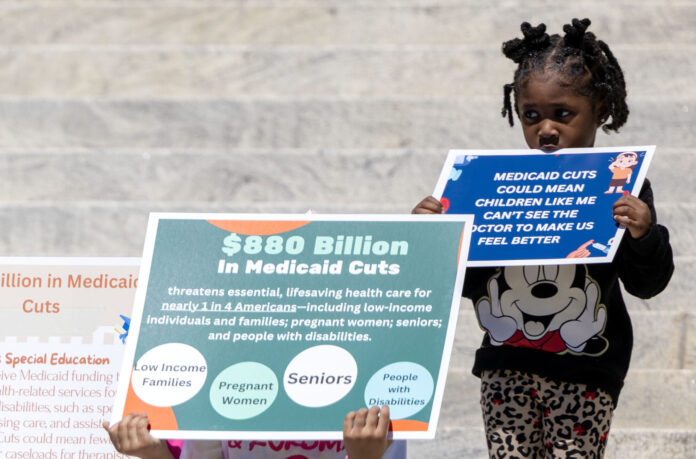As Congress approved a sweeping budget bill that trims federal Medicaid funding by roughly $1 trillion over the next decade, school districts across the U.S. are bracing for severe repercussions on student health services. More than one-third of school-age children—around 38 million—rely on Medicaid or CHIP, and for many, schools are their primary access point for medical and mental health care.
Advocates and educators warn that the new budget shifts costs to states and districts, forcing “impossible trade-offs” that could compromise education funding. One survey, gathering input from over 1,400 school district leaders, highlights the potential fallout:
- 80% expect reductions or layoffs of school health staff such as nurses, psychologists, speech- and physical therapists.
- 70% anticipate cuts to mental and behavioral health services.
- 62% foresee reductions in assistive technology and disability support equipment.A vast majority agree these disruptions could pressure districts to increase taxes or cut other vital services to fill the gap.
- Schools already perform a dual role—educational and healthcare provider—for many students. They offer services ranging from speech and occupational therapy to vision and dental screenings, behavioral and mental health support, and chronic disease management like asthma or diabetes care. This integrated model has helped close health disparities and improved attendance, academic success, and overall student well-being. Cutting Medicaid jeopardizes that framework. Without federal support, districts—especially those in rural or underserved communities—may struggle to retain health staff, offer essential services, or even pay for mandatory supports for students with disabilities. School nurses, often the frontline caregivers, could become increasingly scarce, leading to more absences and mounting health crises for vulnerable students.
Take the case of Angela Reyes, a parent whose children received transformative speech therapy services through their school. In light of the cuts, she’s already attempting DIY therapy at home—acting out exercises unsuspected by many. Stories like hers underscore a difficult truth: without consistent access to in-school care, some children face setbacks in learning, health, and development.
In short, the ripple effects of Medicaid reductions extend far beyond health budgets—they threaten educational equity and community resilience. Schools may need to consider creative strategies, stronger advocacy, and proactive planning to safeguard the well-being of their students and families.


